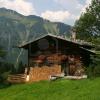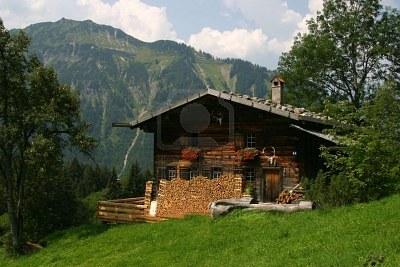
Building and the Art of Timing - Part 1
People who like to travel overseas and have a keen eye will have noticed that many old buildings, churches, city walls and gates have the year they were built carved into a structural beam. Often one can read the year inscribed in the lintels above doorways and gates. In Europe I have seen many such farm houses, city walls and churches that are hundreds of years old and still in good shape.
A Swiss innkeeper showed me the year 1657 engraved into the original beam. He proudly told me that in his little village, called Buerchen, his restaurant was the oldest building. This little alpine village is peacefully nestled into the hill side with a bunch of houses, sheds and stables. These buildings are built with a combination of timber and stone and date back to 300 years ago.
The timber balconies are weathered and not straight, but they are so beautifully organic and still in order. One can see what little repair and replacement has been needed over time. Some houses were renovated, but very rarely have the old timbers and beams been replaced with new modern beams. Nowadays most of these old buildings are heritage buildings and protected by law. This means that renovating work has to be done with authentic methods which will further enhance their lifespan.

How come that hundreds of years ago people produced timber that still is strong and functional today? How can it be that when we build a timber house today, we have to resort to ongoing timber protection and repair to preserve it?
1. Yearly Seasons
Most timber logging was done in winter when the tree is hybernating and the wood fibers are densest. Timber cut in winter contains less moisture, it dries evenly, doesn’t warp and the finished product needs less protection, and e.g. bees wax, because effectively it absorbs less.
In spring when the tree awakens, sap surges up the trunk and into the branches. The tree responds by growing leaves and flowers. Timber cut in spring has a higher moisture content, will dry less evenly and shrink more. In effect, it will deteriorate faster – therefore it needs to be treated, often with highly toxic timber preservatives.
Over the last three generations, the rising numbers of allergy and asthma sufferers have caused concerns about toxins in building materials. These health challenges have created a trend in Germany where now untreated and natural building timber is in high demand. More and more mills make a healthy business by cutting and drying wood by the season and moon phases. Builders too get back into using the natural cycles of the year and moon to properly do their jobs.
2. Monthly Moon Phases
New Moon
The time around New Moon is used best for conceiving and imagining in detail how the project or end product is going to look like, feel like and also function.
There usually is one new moon in every zodiac sign, once a month. Each particular sign relates to specific activities which work out better on the days when the moon is moving through. For example, the best New Moon for detailed planning is the Virgo New Moon, usually in September. When the moon is in Virgo, you actually appreciate structure and you have an eye for detail.
By the time of New Moon, timber has released moisture and is at its densest. The best time to set up fence posts is just before New Moon. The wooden post will settle and literally grow into the posthole over the next two weeks.
To Be Continued...
By Iris Detenhoff
info@moontimediary.com.au
www.moontimediary.com.au
02 6684 2770
Please read Part 2 for the rest of this Article.
